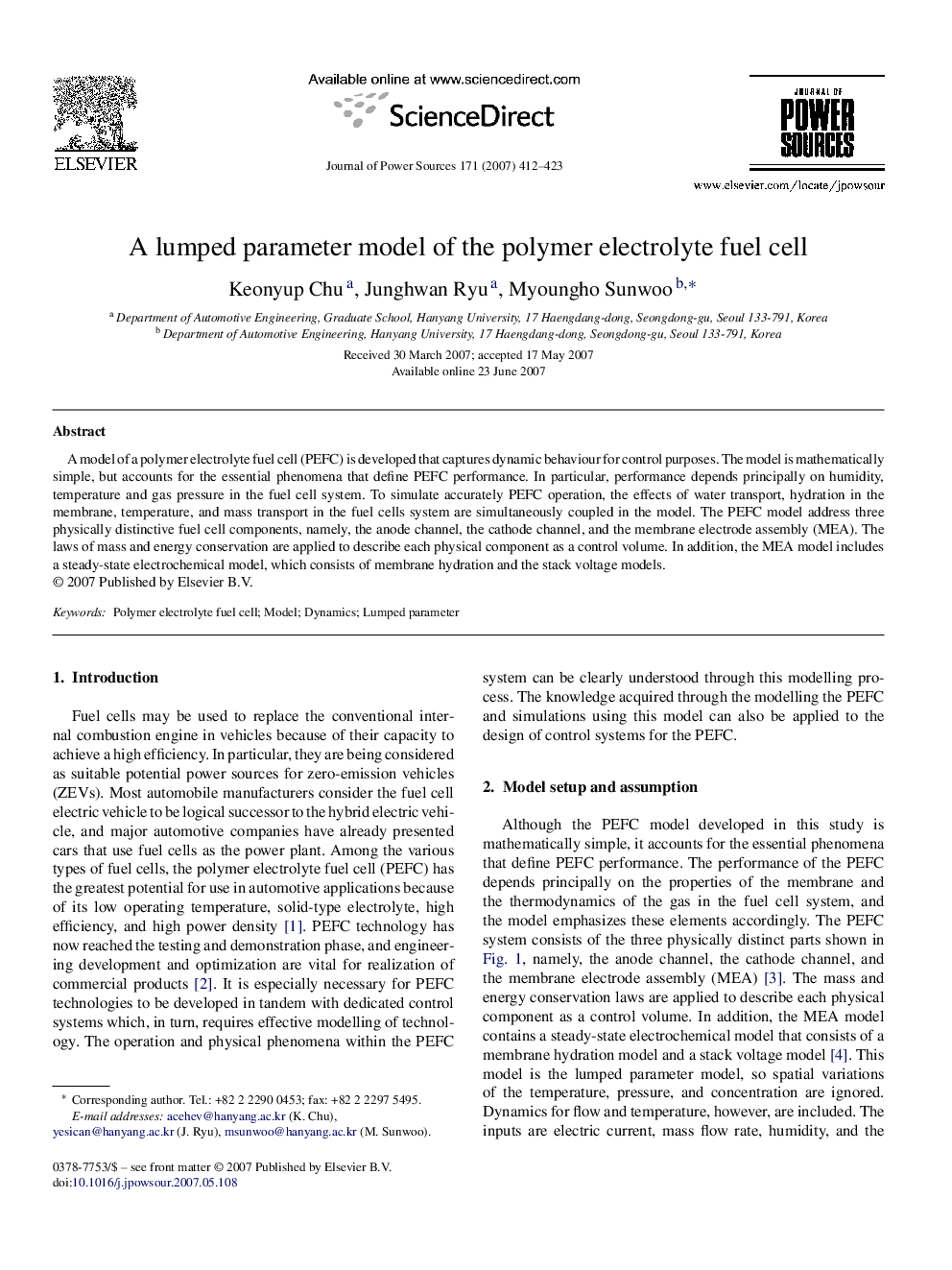| Article ID | Journal | Published Year | Pages | File Type |
|---|---|---|---|---|
| 1286347 | Journal of Power Sources | 2007 | 12 Pages |
A model of a polymer electrolyte fuel cell (PEFC) is developed that captures dynamic behaviour for control purposes. The model is mathematically simple, but accounts for the essential phenomena that define PEFC performance. In particular, performance depends principally on humidity, temperature and gas pressure in the fuel cell system. To simulate accurately PEFC operation, the effects of water transport, hydration in the membrane, temperature, and mass transport in the fuel cells system are simultaneously coupled in the model. The PEFC model address three physically distinctive fuel cell components, namely, the anode channel, the cathode channel, and the membrane electrode assembly (MEA). The laws of mass and energy conservation are applied to describe each physical component as a control volume. In addition, the MEA model includes a steady-state electrochemical model, which consists of membrane hydration and the stack voltage models.
